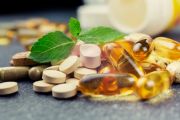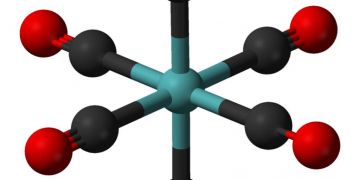Food Sources of Molybdenum
Fortunately, molybdenum is found in unfiltered water, as well as a wide variety of foods, including beans, cheese, grains, leafy green vegetables, nuts and organ meats such as liver. Because the amount of molybdenum found in plant-based foods varies according to the amount of the substance in the soil, a few areas of the globe have less than optimal levels of molybdenum in locally grown food. However, molybdenum deficiency is very rare in humans. The exception is in the case of individuals who must be fed entirely through a vein for a prolonged period of time.
Molybdenum in the Body
Molybdenum helps your body to maintain a healthy state by breaking down substances in the body, including proteins. Your body can store molybdenum for a limited time for future use, but most of the molybdenum you eat is eliminated through your urine. Although molybdenum is known to be necessary for proper health and well-being and is currently being studied for use as a treatment for a large number of medical conditions, more research must be done before it becomes an accepted medical therapy. One area that appears especially promising is the use of molybdenum in the treatment of Wilson's disease, which is a genetic disease that causes copper to build up in the body, eventually causing damage to the liver and brain. Other areas that are being explored are the treatment of inflammatory diseases and even some types of cancer. Reduced levels of molybdenum in the diet of some populations have been linked to increased rates of cancer of the esophagus and stomach.
Recommended Dosage
The National Institute of Medicine has set the recommended daily allowance (RDA) at 45 micrograms a day for adults. Teenagers need 43 micrograms a day, children from nine to 13 years old need 34 micrograms a day, children from four to eight years old need 22 micrograms a day and very young children from one to four years old need 17 micrograms a day. Pregnant or lactating women need 50 micrograms per day. Most Americans meet these requirements through their diets alone. Although these amounts are sufficient to prevent molybdenum deficiency, at this time no one knows what levels are necessary for optimal health. However, there is no scientific evidence that taking more is helpful for healthy people, and too much molybdenum is known to have harmful effects.
References:
Brewer GJ, Askari F, Dick RB, et al. Treatment of Wilson's disease with tetrathiomolybdate: V. Control of free copper by tetrathiomolybdate and a comparison with trientine. Transl Res. 2009;154(2):70-77.
Chan S, Gerson B, Subramaniam S. The role of copper, molybdenum, selenium, and zinc in nutrition and health. Clin Lab Med 1998;18:673-85.
Food and Nutrition Board, Institute of Medicine. Dietary Reference Intakes for Vitamin A, Vitamin K, Arsenic, Boron, Chromium, Copper, Iodine, Iron, Manganese, Molybdenum, Nickel, Silicon, Vanadium, and Zinc. Washington, DC: National Academy Press, 2002.
Huang B, Zhao Y, Sun W, et al. Relationships between distributions of longevous population and trace elements in the agricultural ecosystem of Rugao County, Jiangsu, China. Environ Geochem Health. 2009;31(3):379-390.
Lv J, Wang W, Krafft T, Li Y, Zhang F, Yuan F. Effects of several environmental factors on longevity and health of the human population of Zhongxiang, Hubei, China. Biol Trace Elem Res. 2011;143(2):702-716.
Nouri M, Chalian H, Bahman A, et al. Nail molybdenum and zinc contents in populations with low and moderate incidence of esophageal cancer. Arch Iranian Med 2008;11:392-6.
Teksam O, Yurdakok M, Coskun T. Molybdenum cofactor deficiency presenting with severe metabolic acidosis and intracranial hemorrhage. J Child Neurol 2005;20:155-7.
Vyskocil A, Viau C. Assessment of molybdenum toxicity in humans. J Appl Toxicol 1999;19:185-92.





